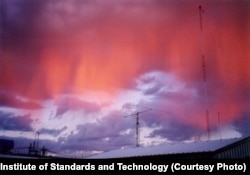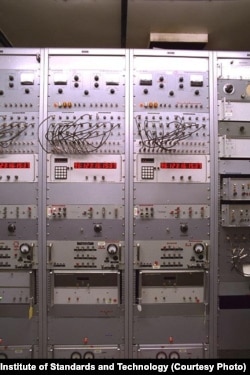President Donald Trump’s administration wants to shut down U.S. government radio stations that announce official time, a service in operation since World War II.
WWV and WWVB in the state of Colorado and WWVH on the island of Kauai in the mid-Pacific state of Hawaii, send out signals that allow millions of clocks and watches to be set either manually or automatically.
WWVB continuously broadcasts digital time codes, using very long electromagnetic waves at a frequency of 60 kilohertz, which are automatically received by timekeeping devices in North America, keeping them accurate to a fraction of a second.
“If you shut down these stations, you turn off all those clocks,” said Don Sullivan, who managed the National Institute of Standards and Technology (NIST) stations between 1994 and 2005.
GPS not good enough
Some argue the terrestrial time signal have been rendered obsolete by the government’s Global Positioning System, whose satellites also transmit time signals, but users disagree, noting GPS devices must have an unobstructed view of a number of satellites in space to properly function.
“Sixty kilohertz permeates in a way GPS can’t,” Sullivan told VOA, explaining that WWVB’s very low frequency signal can be received inside buildings and it is an important backup to GPS in case adversaries attempt to interfere with the satellite radio-navigation system.
WWV and WWVH broadcast on a number of shortwave frequencies, meaning their signals can be received globally.
The Trump administration proposes, in its Fiscal 2019 budget to Congress, cutting $26.6 million and 136 jobs from NIST’s fundamental measurements, quantum science and measurement dissemination activities.
The budget document acknowledges that in addition to synchronizing clocks and watches, the time signals are also used in appliances, cameras and irrigation controllers.
“It’s crazy,” Sullivan said of the proposed cut. “It’s absolutely insane.”
NIST officials say they cannot comment on budget matters. The White House referred questions about NIST’s funding to the Office of Management and Budget, which has not responded to an inquiry from VOA.
Oldest continuously operating radio station
WWV, the oldest continuously operating radio station in the United States, first went on the air from Washington in 1919, conducting propagation experiments and playing music. In the early years, it also transmitted — via Morse code — news reports prepared by the Agriculture Department.
The station subsequently was moved to Maryland and then to Colorado in 1966. WWV has been a frequency standard since 1922 and has disseminated official U.S. time since 1944.
All of the NIST stations rely on extremely precise atomic clocks for the accuracy of their time signals.
WWV, at two minutes past every hour, also transmits a 440 hertz note (A above middle C), something it has done since 1936, allowing musicians to tune their pianos and other instruments.
All three stations retain a huge following worldwide, according to Sullivan.
WWV and WWVH broadcasts can also be heard by telephone and about 2,000 calls are received daily, according to NIST. (To listen to the broadcasts by phone, dial +1-303-499-7111 for WWV and +1-808-335-4363 for WWVH.)
The telephone time-of-day service also is used to synchronize clocks and watches, and for the calibration of stopwatches and timers (although slightly less accurate than radio reception).
Tom Kelly, an amateur radio operator in the state of Oregon, has launched a petition to try to save the stations. His goal is to collect 100,000 online signatures from U.S. residents by September 15 that would compel a response from the White House.
Kelly’s petition calls the stations “an instrumental part in the telecommunications field, ranging from broadcasting to scientific research and education,” noting their transmissions of marine storm warnings, GPS satellite health reports and specific information about solar activity and radio propagation conditions.
Britain, China, Germany, Japan and Russia also have very low frequency time transmissions, but their stations are too distant to automatically set clocks in the United States.
Among other proposed cuts for NIST are its environmental measurement projects measuring the impact of aerosols on pollution and climate change and gas reference materials used by industry to reduce costs of complying with regulations and the Urban Dome research grants for determining how to measure greenhouse gas emissions for cities and across regions.

































